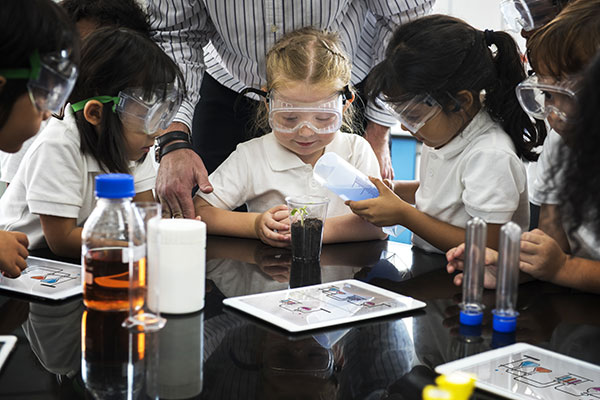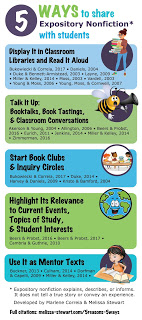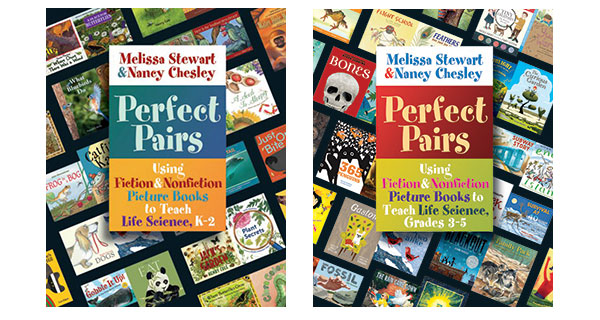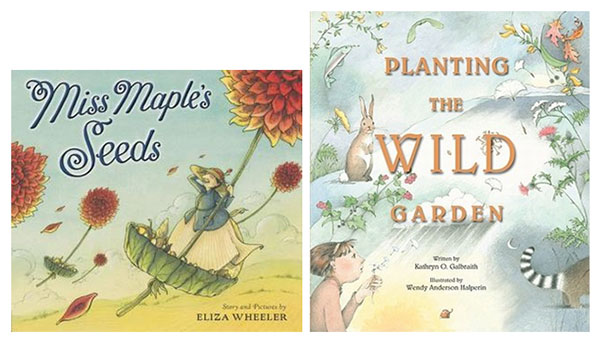Bookology is delighted to feature a sample lesson from Perfect Pairs: Using Fiction & Nonfiction Picture Books to Teach Life Science, K‑2 by children’s book author Melissa Stewart and master educator Nancy Chesley (Stenhouse Publishers). When this book (and its companion for grades 3 – 5) first came across our desk, we were blown away by its perception and usefulness. For educators who are not as confident teaching science as they are language arts and writing, here’s an excellent resource to help you stand more assuredly in front of your students, knowing they’ll be motivated to explore science.
We’re grateful to Melissa, Nancy, and Stenhouse Publishers for the opportunity to give you a clear view inside the Perfect Pairs resources. This grade 2 lesson, “How Wind Water, and Animals Disperse Seeds,” (click for the lesson plan) features two truly wonderful books, Miss Maple’s Seeds by Eliza Wheeler and Planting the Wild Garden by Kathryn O. Gailbraith and Wendy Anderson Halperin. [This lesson plan is from Perfect Pairs:Using Fiction and Nonfiction Picture Books to Teach Life Science, K‑2 by Melissa Stewart and Nancy Chesley copyright © 2014, reproduced with permission of Stenhouse Publishers. stenhouse.com]
Melissa Stewart has also been leading the way for everyone who works with young minds to incorporate the five kinds of nonfiction into their school and classroom libraries as well as their ELA and content area instruction, so we’ve decided to ask her a few questions.
Melissa, when you and educator Nancy Chesley decided to create Perfect Pairs, what did you feel was the most pressing need for these fiction-nonfiction, life science matchups, and accompanying lesson plans?
In recent years, many elementary teachers have been asked to devote more time to language arts and math in an effort to improve student scores on assessment tests. As a result, many K-5 students receive limited science instruction, and many middle school students are sorely lacking in basic science knowledge and skills.
In addition, many elementary teachers do not have a strong science background. Some even report being intimidated by their school’s science curriculum and feel ill equipped to teach basic science concepts. Building science lessons around children’s books enables many elementary educators to approach science instruction with greater confidence. And because our lessons incorporate significant reading and writing, they allow teachers to teach science without compromising language arts instruction time.
Because some children love fiction while others prefer nonfiction, pairing books is an effective way to introduce science concepts. And when a book pair is presented in conjunction with innovative, minds-on activities that appeal to a wide variety of learning styles, students are even more likely to remember the experience — and the content. That’s what Perfect Pairs is all about.
In the Introduction to Perfect Pairs, you state that the lessons in the book address the Next Generation Science Standards (NGSS) and support the Common Core State Standards for English Language Arts. Why is this beneficial for educators?
Common Core and NGSS form the foundation for all current state ELA and science standards—even in states that never officially adopted them, so when teachers use the lessons in Perfect Pairs, they can be confident that they are teaching students the critical concepts and skills they need to know.
To help teachers track how each lesson relates to the standards, tables in the Appendix of Perfect Pairs specify which NGSS Performance Expectation and Science and Engineering Practices each lesson addresses. A second set of tables indicates which Common Core standards for Reading Literature, Reading Informational Text, Writing, and Speaking and Listening each lesson supports.
In Perfect Pairs, you also write that "In recent years, a new kind of children's nonfiction has emerged. These innovative titles are remarkably creative and compelling. Their purpose is to delight as well as inform.”
On your highly-regarded blog, Celebrate Science, you often share lists of these finely-crafted nonfiction books. You also write about the craft of nonfiction writing and include innovative activities and strategies for teaching informational reading and writing. What keeps you committed to your mission to bring more nonfiction to young readers?
The kids.
Many educators have a natural affinity for stories and storytelling, so they connect strongly with fiction. When they choose nonfiction, they gravitate toward narrative nonfiction because it tells true stories.


And yet, studies show that as many as 75 percent of elementary students enjoy reading nonfiction with an expository writing style as much as (33 percent) or more than (42 percent) narratives. If we want all students to develop a love of reading, we need to give them access to a diverse array of fiction, narrative nonfiction, and expository nonfiction.
As students mature as readers, we can help them develop an appreciation for other kinds of writing. But first, we must show kids that we honor all books and value all reading.
To help educators accomplish this goal, I worked with Marlene Correia, past president of the Massachusetts Reading Association and Director of Curriculum and Assessment for the Freetown-Lakeville Regional School District in Lakeville, MA, to develop an infographic that highlights five easy ways educators can share more expository nonfiction with their students.



I bourght this book for my third grade Life Science unit. This book was phenomenal! Great books and great lessons. I hope they make more in this series!
So glad you found the books useful, April. We’ll pass along your comment about wanting more!